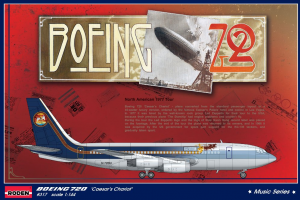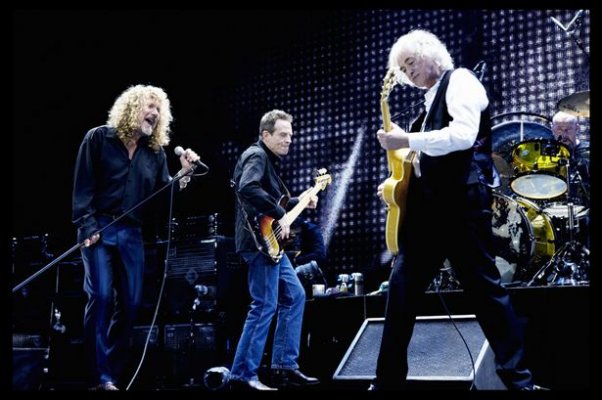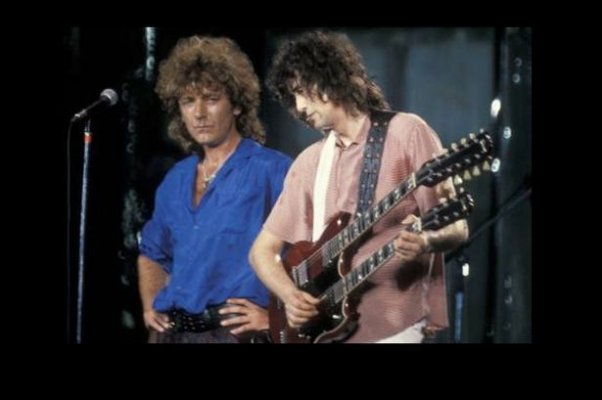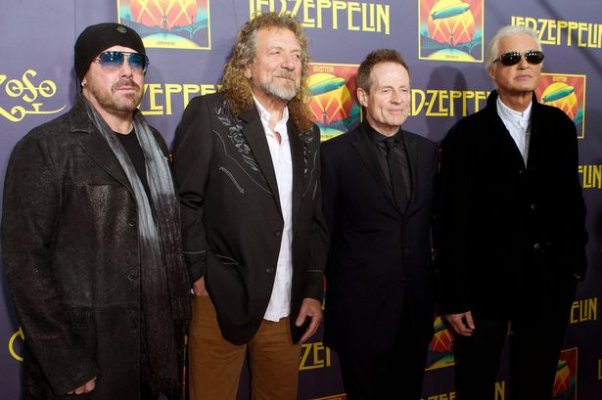gcczep
Ever Onward...
Mike The Mike - Thank You!
The tragic tale of a legendary concert taper
by James Cook
Throughout the 1970s Mike Millard created live recordings of some of the world’s most legendary bands, but in 1990 everything came to an end.

Wednesday, 30 October 2013
Reclusive, genius, paranoid, obsessive, legendary…
Mike Millard earned his “Mike the Mike” nickname by taping now-legendary shows by some of the biggest names in 1970s rock music. For Millard, taping concerts was his life. A perpetual recluse, Mike obsessed over his tapes and their destinies. But in 1990, it all came to a tragic end. The tale of Mike Millard is one that has been whispered in underground circles for decades, perhaps now it’s time for him to receive the recognition he never received in his lifetime.
* * *
Little is known about Millard’s early life in California. The story begins in the early 1970s, when the biggest rock acts of the time would play the LA Forum as part of their West Coast stadium tours. For a music fan such as Mike, a concert was a glorious, fleeting moment – but one that should be captured and cherished. Taking his inspiration from bootleggers – people who sneak audio recorders into concerts – Mike developed an ingenious method to make the best recordings of all time.
Mike Millard rarely worked alone. To smuggle recording equipment into the secure arena, he needed someone to help him. Unlike other recorders, he discovered a nefarious way to sneak past security: a wheelchair. A helper would wheel Mike into the venue. In his prop wheelchair he sat upon a large and expensive Japanese cassette recorder. He also carried a bag of clothes with him. When challenged by security, he claimed that they were there in case he soiled himself.

A Nakamichi 550, the expensive Japanese tape deck that Mike Millard used for his recordings.
Once inside the building, Mike would be wheeled to the handicap area. He would wire up his hat with microphones and connect them to the cassette deck. When the house lights went down, the weighty tape deck was transferred to the bag and Mike got out of his wheelchair and walked to the front of the venue. It was this elaborate set-up combined with his network of willing helpers that led to the legendary Millard tapes.
Recording these performances was not, by any means, free of risk. One terrifying figure that Millard and his friends had to watch out for was Peter Grant. Led Zeppelin’s giant-size manager was known to patrol stadiums, personally destroying recording equipment and administering on-the-spot beatings to ticket touts. Grant had begun his show business career in wrestling, using the stage name “Count Bruno Alessio of Milan”. His fearsome reputation followed him out of the ring and into the stadiums where his band played. The man who hated bootleg recordings was so prone to violence that in 1977 the City of Oakland had to dispatch a SWAT team to arrest Peter Grant after a particularly savage backstage beating.

Peter Grant, the enemy of tapers such as Mike Millard.
Despite the dangers, the list of live performances captured by Millard is expansive: Led Zeppelin, The Rolling Stones, The Who, Pink Floyd, Eric Clapton, Yes, Rush, Wings, Kansas, Robert Plant, Crosby Stills Nash & Young, Genesis and likely many more. Mike Millard wasn’t just there to witness these legendary shows; he went to great efforts to save them for himself and music fans around the world.
Mike Millard recordings are considered some of the best live albums of all time. They are so good, in fact, that even the bands themselves released his recordings officially. Jimmy Page, guitarist of Led Zeppelin, personally selected a Millard recording as part of an official DVD release. But what made his recordings sound “better than professional”, as one internet commentator put it?
The Kernel spoke to Dave Lewis, journalist, former music retailer and the man behind the long-running Tight But Loose Led Zeppelin magazine.
“Mike got that ‘right here, right now’ feel with his taping. He was always in the right spot to capture a real full band sound.”
And for Millard, he found that right spot after years of visiting the same venue using the same trick. Usually he could be found eight rows back from the front, throwing pennies at loud fans to discourage them from shouting or screaming.
Once the tape was made, Millard would select a handful of friends to share a copy with. However, Mike Millard was deeply untrusting of the people he shared his tapes with. Because of this, he purposely “marked” copies with volume fluctuations and other small blemishes. Every copy made was entered into his log book. That way, if a bootleg recording was ever made using one of his recordings, Millard could track it to whoever had sold his tape on.
Despite his paranoia, Millard’s love for music kept him returning to the LA Forum to record more bands. His passion for his craft shows in the richly decorated tapes he would send out. According to friends, Millard would spend hours colouring and decorating tape covers to make them look extra special. He even included photocopies of his concert ticket in with the cassettes.

An original Mike Millard tape, from his friend Barry Goldstein.
Millard struggled with depression throughout his life. Living with his elderly mother in their California home, his health worsened. He still taped concerts, but less and less of his tapes were ever shared. His job at the nearby San Antonio College tided Millard over, but he began a deep spiral into the throes of depression.
In 1990, Mike Millard destroyed almost all of his tapes. Original concert recordings of legendary rock bands, worth tens of thousands of dollars, were gone. Shortly afterwards, Mike Millard committed suicide.
After Millard’s death, his friends contacted his elderly mother and offered to help her organise his possessions. She refused. For years Mike Millard’s bedroom stayed filled with his recording equipment, and most probably the few remaining tapes. Sadly, that’s the last the world ever heard of Mike Millard and his beloved tapes.
News of Mike Millard’s death took years to reach his friends and fellow music-lovers. Letters were left unanswered, trade requests seemingly ignored. Eventually the word got out to the collecting circles: Millard is dead, his tapes are gone, don’t bother trying.
When you listen to professional concert recordings, it’s easy to take the stereo sound for granted. For Mike Millard, he managed to produce a stereo sound through taping microphones to different sides of his hat. Millard recordings are known to frequent the homes of the most rich and famous rock stars, keen to listen again to themselves in their prime. This ingenious man, who faked disability in order to sneak audio equipment into venues, is responsible for some of the world’s most valuable sonic recordings.
Unfortunately, it seems that music fans will never know who Mike Millard was. Whenever his recordings have been officially released, his name never appears in the credits. Hidden from history because of his illegal recordings, Mike the Mike lives on only in the underground music communities to which he originally belonged.
The tragic tale of a legendary concert taper
by James Cook
Throughout the 1970s Mike Millard created live recordings of some of the world’s most legendary bands, but in 1990 everything came to an end.

Wednesday, 30 October 2013
Reclusive, genius, paranoid, obsessive, legendary…
Mike Millard earned his “Mike the Mike” nickname by taping now-legendary shows by some of the biggest names in 1970s rock music. For Millard, taping concerts was his life. A perpetual recluse, Mike obsessed over his tapes and their destinies. But in 1990, it all came to a tragic end. The tale of Mike Millard is one that has been whispered in underground circles for decades, perhaps now it’s time for him to receive the recognition he never received in his lifetime.
* * *
Little is known about Millard’s early life in California. The story begins in the early 1970s, when the biggest rock acts of the time would play the LA Forum as part of their West Coast stadium tours. For a music fan such as Mike, a concert was a glorious, fleeting moment – but one that should be captured and cherished. Taking his inspiration from bootleggers – people who sneak audio recorders into concerts – Mike developed an ingenious method to make the best recordings of all time.
Mike Millard rarely worked alone. To smuggle recording equipment into the secure arena, he needed someone to help him. Unlike other recorders, he discovered a nefarious way to sneak past security: a wheelchair. A helper would wheel Mike into the venue. In his prop wheelchair he sat upon a large and expensive Japanese cassette recorder. He also carried a bag of clothes with him. When challenged by security, he claimed that they were there in case he soiled himself.

A Nakamichi 550, the expensive Japanese tape deck that Mike Millard used for his recordings.
Once inside the building, Mike would be wheeled to the handicap area. He would wire up his hat with microphones and connect them to the cassette deck. When the house lights went down, the weighty tape deck was transferred to the bag and Mike got out of his wheelchair and walked to the front of the venue. It was this elaborate set-up combined with his network of willing helpers that led to the legendary Millard tapes.
Recording these performances was not, by any means, free of risk. One terrifying figure that Millard and his friends had to watch out for was Peter Grant. Led Zeppelin’s giant-size manager was known to patrol stadiums, personally destroying recording equipment and administering on-the-spot beatings to ticket touts. Grant had begun his show business career in wrestling, using the stage name “Count Bruno Alessio of Milan”. His fearsome reputation followed him out of the ring and into the stadiums where his band played. The man who hated bootleg recordings was so prone to violence that in 1977 the City of Oakland had to dispatch a SWAT team to arrest Peter Grant after a particularly savage backstage beating.

Peter Grant, the enemy of tapers such as Mike Millard.
Despite the dangers, the list of live performances captured by Millard is expansive: Led Zeppelin, The Rolling Stones, The Who, Pink Floyd, Eric Clapton, Yes, Rush, Wings, Kansas, Robert Plant, Crosby Stills Nash & Young, Genesis and likely many more. Mike Millard wasn’t just there to witness these legendary shows; he went to great efforts to save them for himself and music fans around the world.
Mike Millard recordings are considered some of the best live albums of all time. They are so good, in fact, that even the bands themselves released his recordings officially. Jimmy Page, guitarist of Led Zeppelin, personally selected a Millard recording as part of an official DVD release. But what made his recordings sound “better than professional”, as one internet commentator put it?
The Kernel spoke to Dave Lewis, journalist, former music retailer and the man behind the long-running Tight But Loose Led Zeppelin magazine.
“Mike got that ‘right here, right now’ feel with his taping. He was always in the right spot to capture a real full band sound.”
And for Millard, he found that right spot after years of visiting the same venue using the same trick. Usually he could be found eight rows back from the front, throwing pennies at loud fans to discourage them from shouting or screaming.
Once the tape was made, Millard would select a handful of friends to share a copy with. However, Mike Millard was deeply untrusting of the people he shared his tapes with. Because of this, he purposely “marked” copies with volume fluctuations and other small blemishes. Every copy made was entered into his log book. That way, if a bootleg recording was ever made using one of his recordings, Millard could track it to whoever had sold his tape on.
Despite his paranoia, Millard’s love for music kept him returning to the LA Forum to record more bands. His passion for his craft shows in the richly decorated tapes he would send out. According to friends, Millard would spend hours colouring and decorating tape covers to make them look extra special. He even included photocopies of his concert ticket in with the cassettes.

An original Mike Millard tape, from his friend Barry Goldstein.
Millard struggled with depression throughout his life. Living with his elderly mother in their California home, his health worsened. He still taped concerts, but less and less of his tapes were ever shared. His job at the nearby San Antonio College tided Millard over, but he began a deep spiral into the throes of depression.
In 1990, Mike Millard destroyed almost all of his tapes. Original concert recordings of legendary rock bands, worth tens of thousands of dollars, were gone. Shortly afterwards, Mike Millard committed suicide.
After Millard’s death, his friends contacted his elderly mother and offered to help her organise his possessions. She refused. For years Mike Millard’s bedroom stayed filled with his recording equipment, and most probably the few remaining tapes. Sadly, that’s the last the world ever heard of Mike Millard and his beloved tapes.
News of Mike Millard’s death took years to reach his friends and fellow music-lovers. Letters were left unanswered, trade requests seemingly ignored. Eventually the word got out to the collecting circles: Millard is dead, his tapes are gone, don’t bother trying.
When you listen to professional concert recordings, it’s easy to take the stereo sound for granted. For Mike Millard, he managed to produce a stereo sound through taping microphones to different sides of his hat. Millard recordings are known to frequent the homes of the most rich and famous rock stars, keen to listen again to themselves in their prime. This ingenious man, who faked disability in order to sneak audio equipment into venues, is responsible for some of the world’s most valuable sonic recordings.
Unfortunately, it seems that music fans will never know who Mike Millard was. Whenever his recordings have been officially released, his name never appears in the credits. Hidden from history because of his illegal recordings, Mike the Mike lives on only in the underground music communities to which he originally belonged.









